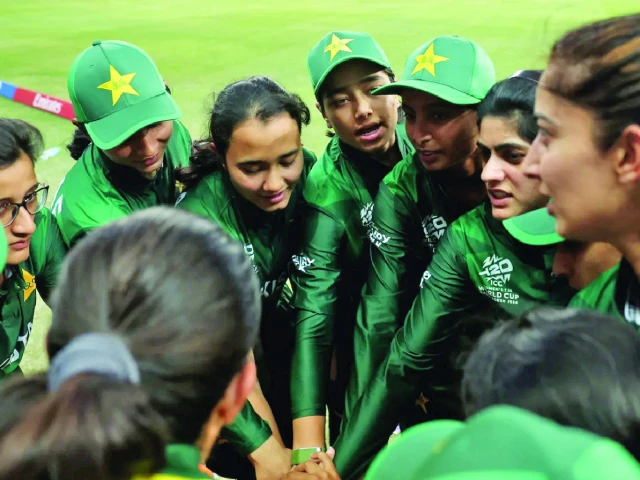Where ex-cricketer Anaya Bangar’s research project stands amid wider debate on trans women in sports

Written by Shaarvi MagazineAnaya Bangar, a transgender woman and former professional cricketer, recently participated in a research project to evaluate how hormone therapy has impacted her athletic performance compared to cisgender women (whose gender identity is the same as the one assigned at birth).The study was conducted at the Manchester Metropolitan University Institute of Sport (UK) and aimed to provide data on the physiological effects of hormone replacement therapy (HRT) on a transgender athlete. HRT can involve taking hormones such as estrogen or testosterone through pills or other means.Story continues below this adBangar, who transitioned in her early twenties, has been vocal about the need for evidence-based policies in sports to ensure fair inclusion of transgender athletes. The project aims to improve that understanding.What does the report say?On June 17, Bangar shared the findings on Instagram. Her athletic performance was tracked over eight weeks (January to March 2025) after having completed one year of HRT.Parameters such as body mass, strength, endurance, and injury risks were measured at regular intervals and compared to baseline data from cisgender female athletes. The study also analysed various biochemical markers and power tests like muscle mass, stamina, and glucose and oxygen levels.View this post on Instagram A post shared by Anaya Bangar (@anayabangar)The results found her haemoglobin levels, glucose regulation, and power output to be within cisgender female range, while her endurance and muscle power declined under hormone therapy, proving HRT’s effectiveness in aligning her physiology to cisgender female standards.Bangar has urged the Board of Control for Cricket in India (BCCI) and the International Cricket Council (ICC) to examine her report for future research and open discussions about the inclusion of trans women in women’s cricket.What is the larger debate?Story continues below this adDespite legal recognition of transgender people in recent years in many parts of the world, their access to a range of opportunities remains limited due to systemic barriers and longstanding binary categorisations of male and female.Perhaps nowhere is this more evident than in sports, which are largely divided based on sex. The differences in male and female biology and physiology, and their impact on improving athletic abilities, have driven calls for removing trans women from competing in women’s categories. The debate, therefore, concerns preventing what are seen as unfair advantages, while making sports inclusive.What do the regulations say?Different countries and sporting bodies have adopted different guidelines. In the US, President Donald Trump’s executive order banning trans women from women’s sports has caused many educational institutions to restrict trans athletes, including a recent agreement between the University of Pennsylvania and the US government to prevent trans athletes from joining women’s teams.In general, sporting organisations have tightened testosterone limits for transgender female athletes, stating it led to “advantages” in power-based sports. Various incidents, like the controversy involving Olympic boxer Imane Khalif (who was not transgender but online misinformation made such claims at the time), or the restrictions for trans swimmer Lia Thomas, have all been cited as “unfair biological advantages”.Story continues below this adThe BCCI currently follows the ICC guidelines on gender eligibility for athletes, according to which “male-to-female participants who have undergone male puberty are not eligible to compete in the international women’s game, irrespective of any surgical or gender reassignment treatment they may have undertaken.”India lacks specific domestic laws or policies addressing transgender athletes in sports, leaving their participation subject to international sporting bodies’ regulations. The Transgender Persons (Protection of Rights) Act, 2019, guarantees equality but does not outline sports-specific provisions.What has Bangar argued?Bangar has advocated for collecting data on the exact nature of these supposed “biological advantages” — something yet to be covered by large-scale studies.In Explained | Key Supreme Court verdicts that moved the needle on LGBTQ rights in IndiaIn 2024, one study said that based on limited evidence, it was suggested that the physical performance of trans people who have undergone at least two years of HRT “approaches that of cisgender controls” (“The Impact of Gender-Affirming Hormone Therapy on Physical Performance”, The Journal of Clinical Endocrinology & Metabolism). That means trans men’s physical abilities get closer to those of cis men, while trans women reach levels similar to cis women.Story continues below this adHowever, it added that more data was needed. “As trans people have been stigmatized for many decades, there is little research in the field and the evidence base is not definitive,” it said. In Bangar’s case, too, more comprehensive research involving larger sample sizes would be required. The BCCI or ICC has not yet commented on her project.The writer is a student who is a summer intern at The Indian Express.










